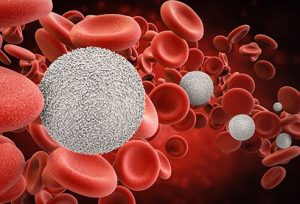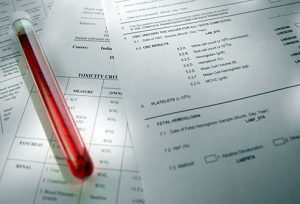- Check for anemia, a condition that causes you to have fewer red blood cells than usual
- Find out if you have another health issue or to explain symptoms like weakness, fever, bruising, or feeling tired
- Keep an eye on a blood condition
- See how medications, medical conditions, or treatments like chemotherapy are affecting your blood

How Is a CBC Done?
If the CBC is the only blood test you’re having, you can eat and drink like you usually would.
Your part of the test is simple and takes just a few minutes. A nurse or lab tech will take a sample of blood by putting a needle into a vein in your arm. Afterward, you can leave and get back to your routine. They’ll send the blood to a lab for review.
What Does a CBC Measure?
The test can tell your doctor a lot about your overall health. It measures:
- White blood cells (WBCs). These help your body fight germs. If you have too many of them, it could be a sign of inflammation, infection, a medical reaction, or another health condition. If it’s low, you could be at a higher risk for infection. A medication, a viral infection, or a bone marrow disease could also cause a low count.
- Red blood cells (RBC). These deliver oxygen throughout your body. They also help carry carbon dioxide. If your RBC count is too low, you may have anemia or another condition.
- Hemoglobin (Hb or Hgb). This is the protein in your blood that holds oxygen.
- Hematocrit (Hct). This test tells how much of your blood is made up of red blood cells. A low score may be a sign that you don’t have enough iron, the mineral that helps your body make red blood cells. A high score could mean you’re dehydrated or have another condition.
- Mean corpuscular volume (MCV). This is the average size of your red blood cells. If they’re bigger than usual, your MCV will be higher. That could happen if you have low vitamin B12 or folate levels. If your red blood cells are smaller, you could have a type of anemia.
- Platelets. These help your blood clot.

CBC Results
When you get your report, you’ll see two columns: a “reference range” and your results. If your results are inside the reference range, they’re considered normal. If your results are higher or lower than the reference range, they’re abnormal. Mild anemia is one of the most common reasons your results might be off.
Each lab has different ways of studying your blood. So the reference range will depend on the lab that handles your blood tests. It’s also based on things that can affect your blood like your age, your sex, and how high above sea level you live.
In general, the reference ranges are:
- White blood cells: 4,500 to 11,000 cells per microliter (cells/mcL)
- Red blood cells: 4.5 million to 5.9 million cells/mcL for men; 4.1 million to 5.1 million cells/mcL for women
- Hemoglobin: 14 to 17.5 grams per deciliter (gm/dL) for men; 12.3 to 15.3 gm/dL for women
- Hematocrit: 41.5% to 50.4% for men; 35.9% to 44.6% for women
- Mean corpuscular volume: 80 to 96
- Platelets: 150,000 to 450,000 platelets/mcL
What Else Might My CBC Tell Me?
Your doctor might order more results to learn whether you have an illness or blood condition, including:
- Mean corpuscular hemoglobin (MCH). This test tells how much hemoglobin is in your typical red blood cell.
- Mean corpuscular hemoglobin concentration (MCHC). This measures the concentration of hemoglobin in a certain amount of blood.
- Red cell distribution width (RDW). This shows how your much your red blood cells vary in size.
- Reticulocyte count. This test measures the number of new red blood cells in your body.
- Mean platelet volume (MPV). This result gives the average size of the platelets in your blood.
- Platelet distribution width (PDW). This shows how much your platelets vary in size.
- White blood cell differential. There are five types of white blood cells: basophils, eosinophils, lymphocytes, monocytes, and neutrophils. This test shows how many of each kind you have.

